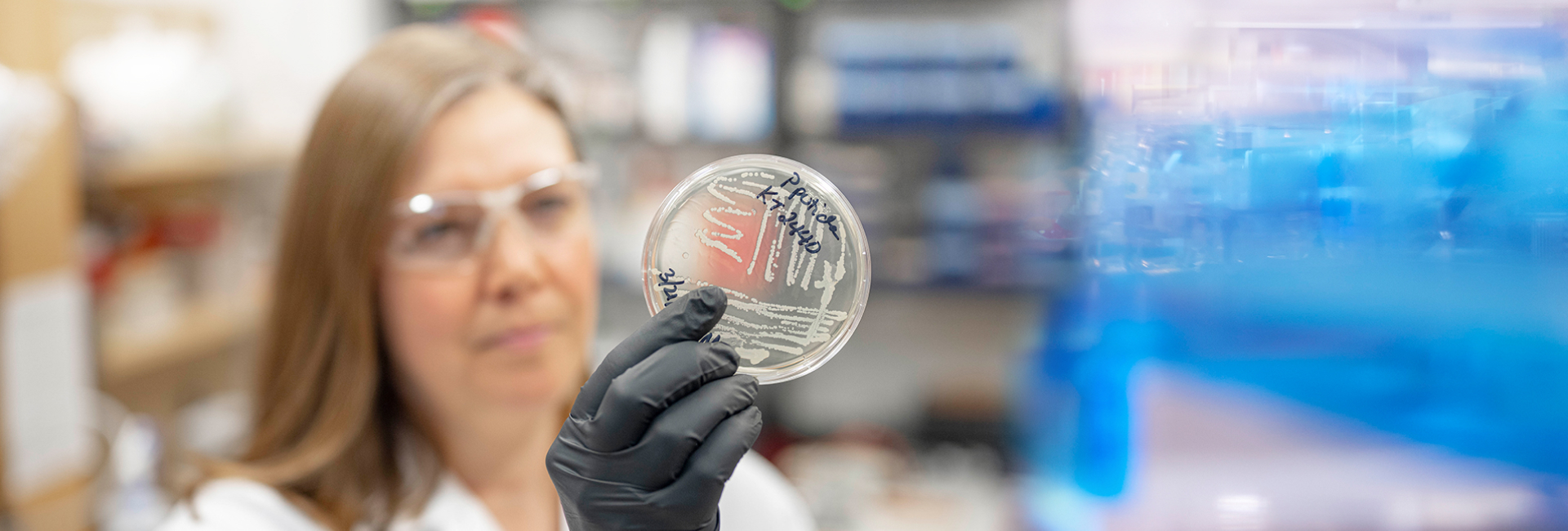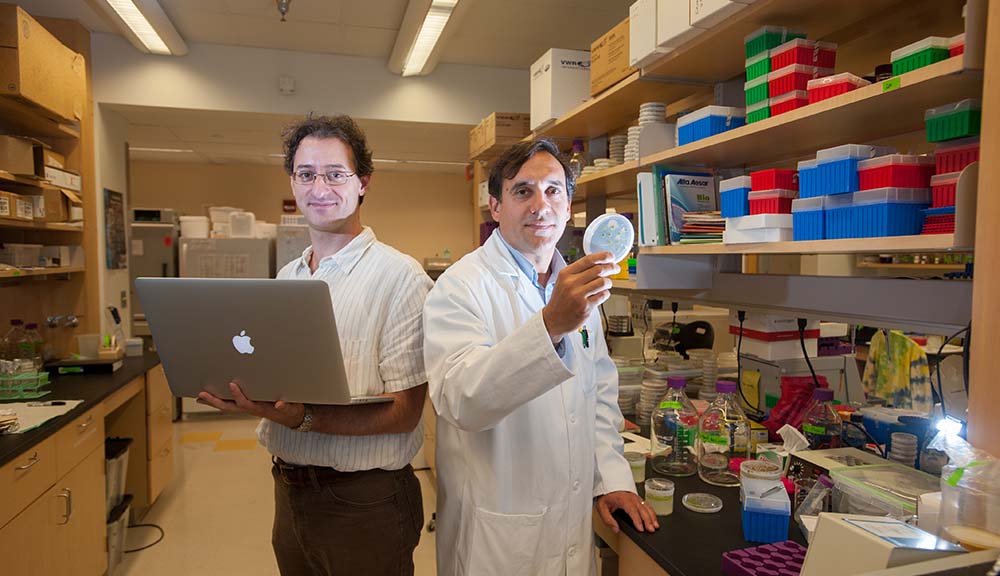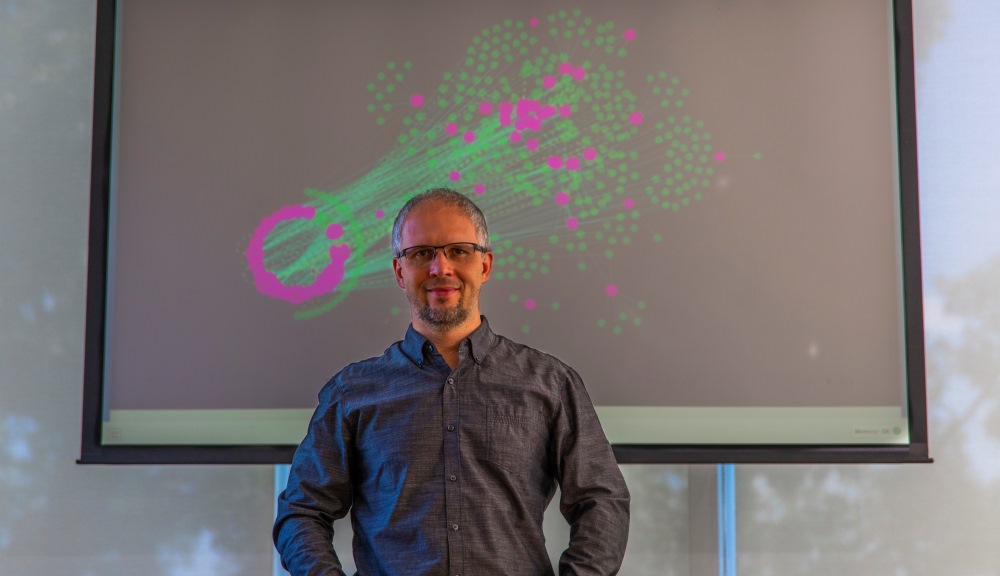While cells typically grow by expanding outward in all directions, many critical biological functions—including the development of root hairs in plants, budding in yeast, and the extension of axons in animal neurons—require cells to grow in in a single direction. Though biologists have known for several decades which structures within the cell appear to participate in what is known as polarized growth, exactly how those components work together to achieve this complex function remains a mystery.
With a five-year, $977,000 CAREER Award from the National Science Foundation (NSF), Luis Vidali, assistant professor of biology and biotechnology at Worcester Polytechnic Institute (WPI), hopes to begin to answer that fundamental question by exploring how components of the cell's internal anatomy work together to focus the mechanics of growth on a single point. The CAREER Award is the most prestigious and competitive NSF award for young faulty members. Vidali's award, the largest CAREER Award ever received by a WPI faculty member, brings to 18 the number of current WPI faculty members who have received the honor
"The CAREER Award recognizes young faculty members who demonstrate great promise as researchers and educators, and Professor Vidali certainly excels in both of those areas," said WPI Provost Eric Overström. "Through his own work, which may reshape our thinking about a fundamental aspect of cell growth, and his dedication to engaging his students in the excitement of rigorous, cutting-edge research, he promises to have an important impact on the future of his field."
Vidali's research will focus on the interactions among components that are part of virtually all cells: the actin cytoskeleton, a sort of scaffolding that gives cells their structure and shape; vesicles, tiny pouches used for a variety of functions, including the transport of materials within the cell; and myosins, proteins that are known as motors because they act like tiny trucks that can lug vesicles and other materials along sections of the cytoskeleton.
"Biologists have known for a long time that these components are all involved in polarized cell growth," Vidali said, "but we don't know how they are organized to do what they do. We don't understand how they work together at the mechanistic level. It is important to pursue this knowledge because the establishment and maintenance of polarity is an essential function that impacts many critical aspects of development in animals, plants, and fungi."
Vidali will study polarized growth in Physcomitrella patens, a moss that has filamentous cells that grow only at the tip. He will employ a combination of genetic techniques, advanced microscopy, and computer simulations to attempt to compile a complete picture of how actin, myosin, and vesicles work in concert to deliver materials the cell needs to build new cell membrane and new cell wall (a rigid structure that surrounds the cell membrane in plants, bacteria, fungi, and algae) to the proper locations.
The combination of analytical techniques is required to obtain what Vidali calls "spatial and temporal resolution." Spatial resolution is important, he says, because the cytoskeleton, myosin, and vesicles are all extremely small—far smaller than the 200 nanometer resolution of light microscopes—and because it is important to be able to determine exactly where they are active within the cell.
Achieving temporal resolution is equally challenging, he said, because these structures are highly dynamic, making it difficult for the research team to piece together the sequence of actions that lead to polarized growth unless they can observe the activities of the critical structures at very short intervals. Vidali likened the challenge to trying to figure out the rules of football using only snapshots. "Imagine if all you have are photos taken a minute apart," he said. "You would never capture a complete pass. We need to be able to document, precisely, not only where things are taking place, but in what sequence."
Vidali and his team will use a variety of microscopy techniques to image the interplay between the cytoskeleton, myosin motors, and vesicles. Electron microscopes can image these minute structures in great detail, and the resulting images are the equivalent of out-of-context snapshots since the cells must be killed before they are imaged. Confocal microscopes are not as powerful, but can record sequences of three-dimensional images. Total internal reflection fluorescence (TIRF) microscopes can achieve high resolution with a thin layer of a sample. The confocal and TIRF images will contribute to both spatial and temporal resolution.
They will also use a variety of genetic tools, including RNA interference, or RNAi, to knock down genes and homologous recombination to directly knock out (delete) genes in the moss genome to help determine the roles individual genes and the proteins they code for play in the cells. In addition, Vidali has developed a version of myosin that can be switched on or off instantaneously by changing the ambient temperature.
Since Physcomitrella patens has only two forms of this type of myosin (unlike many plants, which have 10 or more), he will be able to use genetic engineering to knock out one myosin and then quickly switch off the other, temperature-sensitive version. Since myosin may play a critical function in the sequence of events leading to polarized growth, being able to turn it on and off at will provides Vidali a powerful tool for unraveling that sequence.
Finally, in collaboration with Erkan Tüzel, assistant professor of physics at WPI and a frequent collaborator, Vidali will develop computer simulations that will enable him to better visualize how actin, myosin, and the vesicles might work together and to test various hypothesis about the actions that ultimately lead to polarized growth. The models will help guide work in the laboratory, he said, while the lab results will be fed back onto the simulations to improve their accuracy.
"By combining our microscopy work with what we learn from our genetic tools and what we see in the computer simulations, we believe we can begin, for the first time, to shine a light on the mechanisms of polarized cell growth," Vidali said. "We will also come to understand more about structures and functions that are common to virtually all cells and that play a role in such fundamental processes as cell division, morphogenesis, and the immunological response. This research promises to not only broaden our understanding of cell biology, but reveal something fundamental about life, itself."




